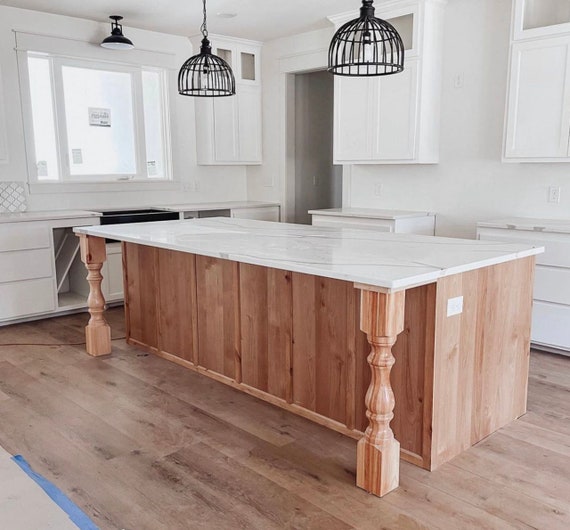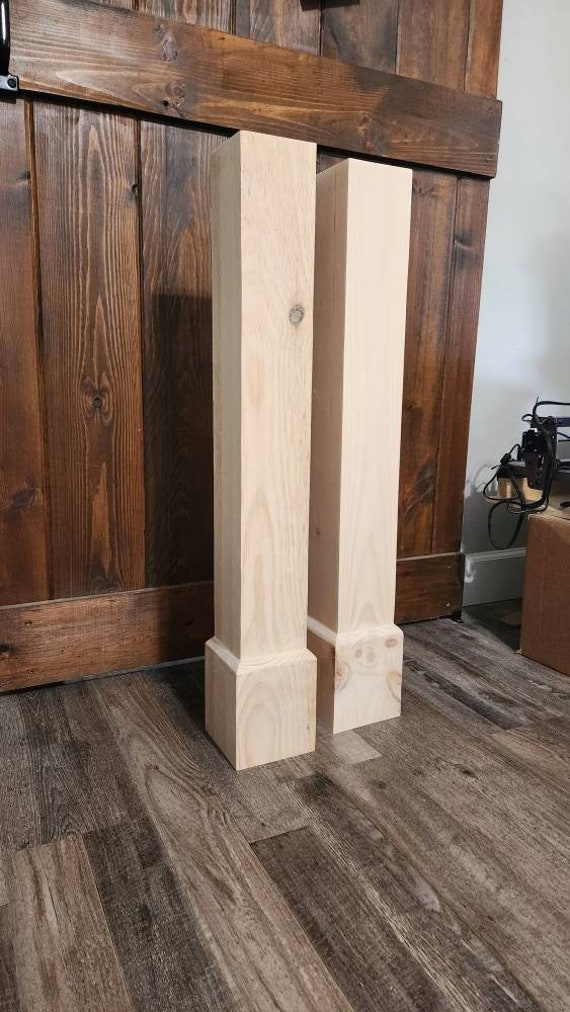The Top Kitchen Island Leg Styles to Enhance Any Layout Aesthetic
The Top Kitchen Island Leg Styles to Enhance Any Layout Aesthetic
Blog Article
The Value of a Sturdy Kitchen Island Leg in Producing a Practical Cooking Location
A tough kitchen area island leg acts as an essential part in developing a practical cooking setting, offering essential support for both the kitchen counter and different kitchen area tasks. The stability it supplies can considerably reduce the threat of mishaps in high-traffic locations, while also adding to the general aesthetic comprehensibility of the area. As kitchens develop into multifunctional areas for cooking, dining, and interacting socially, the choice of materials and layout factors to consider for island legs comes to be significantly crucial. Understanding these components can change your kitchen area into a safer and extra reliable area, triggering additional exploration right into the most effective choices available.
Advantages of Sturdy Island Legs
Giving necessary support, sturdy cooking area island legs play a critical duty in improving the capability and toughness of kitchen islands - kitchen island leg. These legs not just birth the weight of the kitchen counter and any type of additional items put on the island, but additionally add to the total stability of the framework. A well-supported kitchen island makes sure that it continues to be upright and useful, even under hefty use, which is particularly important in busy cooking area atmospheres
Furthermore, strong island legs can enhance the visual appeal of the kitchen area. They provide a strong structure that can match various layout styles, from modern-day to typical. This convenience allows property owners to personalize their cooking area islands according to individual preference while guaranteeing that the structural stability stays uncompromised.
In enhancement to their encouraging duty, durable kitchen island legs can also boost safety. Eventually, investing in sturdy cooking area island legs is crucial for a functional and visually pleasing cooking location.
Materials for Cooking Area Island Legs
When selecting products for kitchen island legs, toughness and aesthetic appeal are critical aspects to think about. One of the most common materials consist of wood, steel, and engineered timber, each offering distinct benefits.
Wood, such as oak, maple, or cherry, is a classic option due to its toughness and ageless beauty (kitchen island leg). It can stand up to significant weight and is resistant to put on, making it perfect for high-use kitchen area settings. Additionally, hardwood can be discolored or repainted to complement numerous kitchen area designs
Steel legs, usually crafted from stainless-steel or wrought iron, provide a contemporary and industrial look. They are extremely strong and can support substantial tons while being resistant to wetness and warmth, which is useful in a cooking area. Steel legs can additionally be quickly cleaned, improving their functionality.

Layout Factors To Consider for Security
The selection of materials for kitchen island legs directly influences the layout considerations for security. When making a kitchen island, it is vital to assess the weight-bearing ability of the chosen materials. Much heavier materials, such as solid timber or steel, generally provide better security, especially under the anxiety of daily usage.
Additionally, the leg layout have to incorporate correct geometry to boost stability. A wider base raises the assistance location, decreasing the threat of wobbling or tipping. Consideration should Continue also be provided to the elevation of the legs; disproportionate leg sizes can cause discrepancy, endangering the total security of the island.
In addition, the circulation of weight throughout the island is critical. Making certain that the leg placement lines up with the heaviest elements, such as countertops and home appliances, will additionally boost stability.
Upkeep Tips for Long Life

Cleansing is an additional critical aspect of maintenance. Depending upon the material of the legs-- whether timber, steel, or composite-- ideal cleansing techniques need to be used. For wooden legs, a gentle wipe with a wet cloth and an ideal wood cleaner will assist maintain their coating. Metal legs might need a light gloss to stop rust and keep their luster.
If the kitchen area island experiences heavy usage, consider enhancing the legs with added brackets or supports to enhance longevity. By following these upkeep pointers, house owners can ensure their cooking area island legs remain practical and robust for years to come.
Picking the Right Leg Design
Regular maintenance ensures that kitchen area island legs continue to be strong and useful, however picking the appropriate leg style is similarly important for both aesthetic appeals and support. The selection of leg design can considerably affect the overall layout and harmony of your kitchen area.

Performance is an additional vital facet. Thicker legs or those with a strong base can support much heavier check counter tops and tools, enhancing the island's utility. On the other hand, slim legs may produce a ventilated appearance, ideal for lighter designs but possibly less encouraging.
Final Thought
In recap, the relevance of strong kitchen island legs can not be overemphasized in the development of a functional food preparation location. These legs supply necessary support, improve security, and contribute to the overall visual of the kitchen area. By thoroughly selecting proper materials and layouts, along with applying correct maintenance methods, the long life and effectiveness of kitchen area islands can be made sure. Eventually, buying robust island legs is basic to achieving a efficient and secure cooking setting.
A tough cooking area island leg offers as a fundamental component in developing a functional food preparation environment, providing necessary support for both the kitchen counter and various kitchen tasks.Offering necessary assistance, durable kitchen island legs play a pivotal function in enhancing the performance and sturdiness of kitchen area islands. Ultimately, investing in strong kitchen area island legs is important for a functional and visually pleasing cooking area.
Consideration must also be given to the elevation of the legs; disproportionate leg sizes can lead to imbalance, compromising the general stability of the island.
Wood legs offer heat Extra resources and a classic appearance, while steel legs provide a contemporary and commercial feel.
Report this page